All products featured are independently chosen by us. However, SoundGuys may receive a commission on orders placed through its retail links. See our ethics statement.
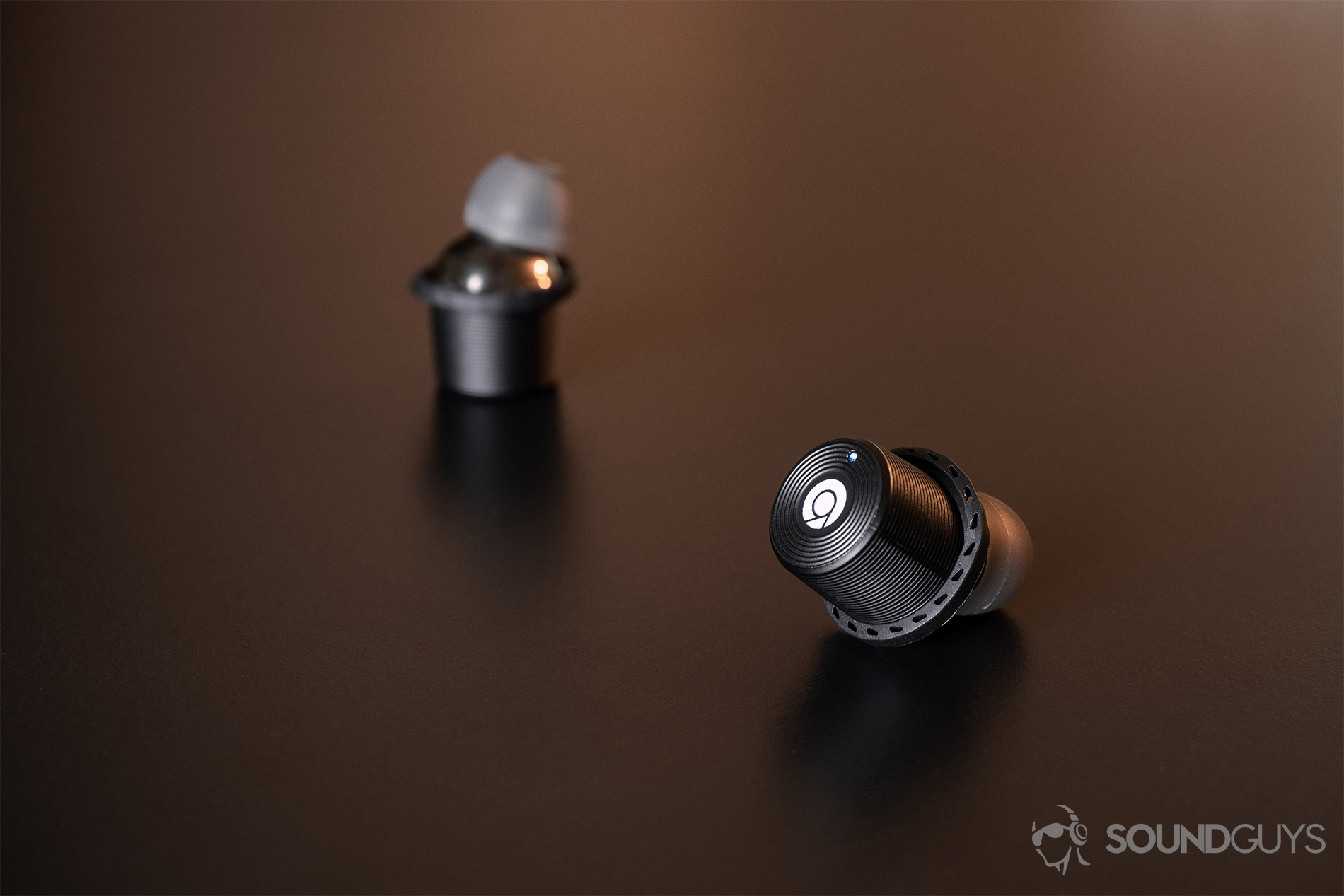
Rowkin Ascent Micro review: High value, moderate price
October 22, 2018
Rowkin Ascent Micro
Many of us are interested in true wireless earbuds because of their compact form and cord-cutting convenience. However, you may have noticed that a handful of truly wireless options include hefty charging cases, undermining the small build that we listeners want. Well, the Rowkin Ascent Micro includes a carrying case that resembles the AirPods’ and earbuds that are comparable in size. But are the pitfalls of the Ascent Micro worth the low, $99 price tag?
Editor’s note: this review was updated to reflect price changes and links to contextual information regarding connectivity.
Who is the Rowkin Ascent Micro for?
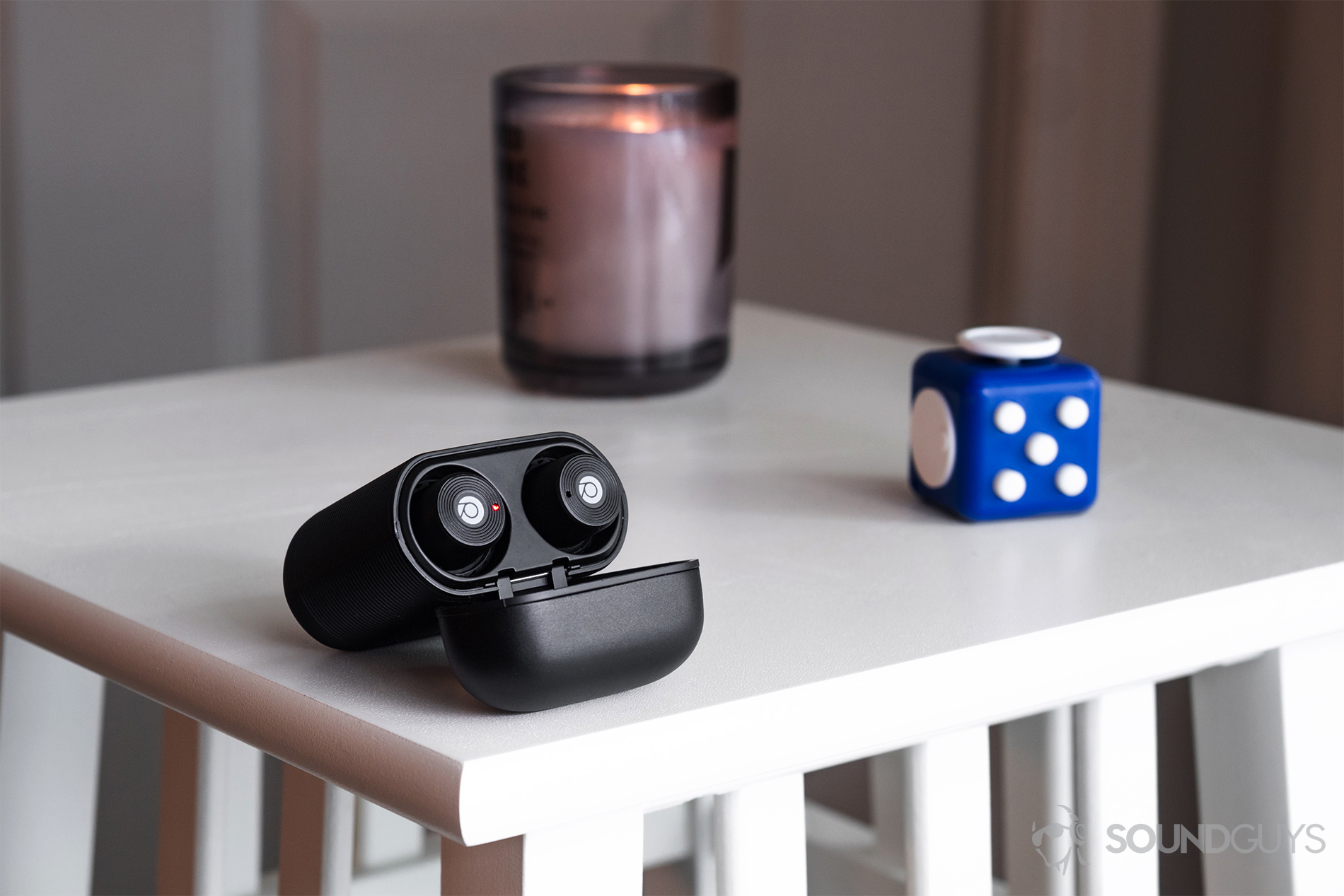
- Athletes. With the earbuds being IPX5-certified and the ribbed design on the earbuds and case, the Ascent Micro were made to withstand sweaty workouts from all athletes—save for swimmers.
- Commuters. True wireless earbuds are liberating. You’ve completely cut the cord and can bustle onto the subway without worrying about getting your cabled wireless earbuds caught on a stranger’s lapel. Additionally, the noise reduction and echo cancellation capabilities make these a great option for telecommuters, even if they are omnidirectional mics.
- Listeners who prioritize compact design above extended playback time. We’ve seen plenty of truly wireless earbuds that include bulky charging cases, but that undermines the desire to have a lightweight, compact earbud setup. The Ascent Micro stays true to its name with a carrying case about the size of the AirPods’.
What’s inside?
The Rowkin Ascent Micro affords a compact charging case, a USB-C cable, three pairs of silicone ear tips, and the truly wireless earbuds.
How is the Rowkin Ascent Micro built?
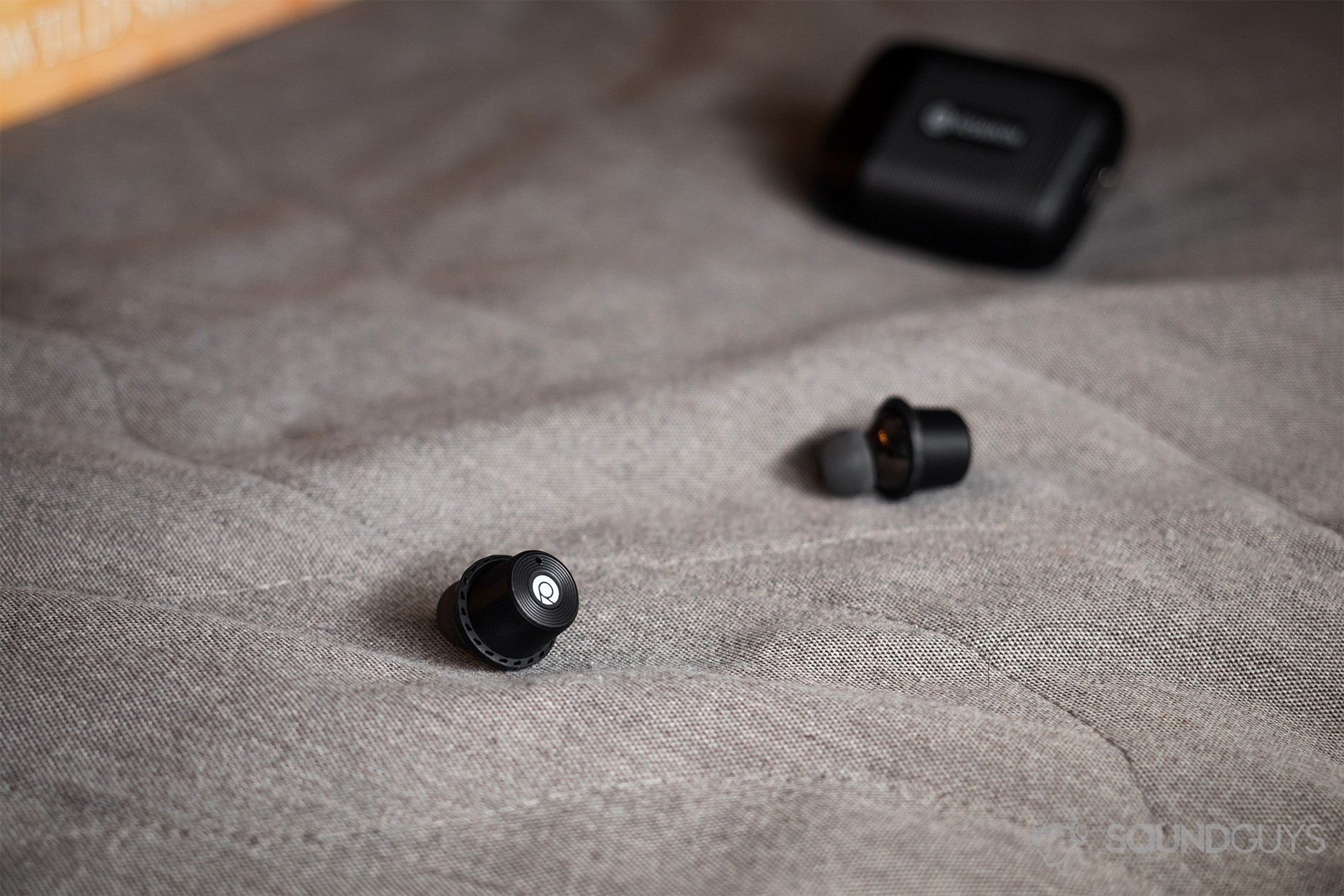
The earbuds themselves are akin to Rowkin Ascent Charge+ with ribbed, cylindrical housings, making it easier to grasp them with sweaty fingers. What’s more, the Rowkin Ascent Micro ‘buds retain the same capacitive touch panels and LED indicators. While the touch controls are comprehensive and functional, they’re not the most intuitive and require deliberate memorization.
Each earbud is outfitted with a perforated silicone ring that sits in a divot between the metallic and matte finish. This unique design serves a purpose by keeping the earbuds in place during vigorous movements. Even though the rings are effective, they can be irritating if you have smaller ears. Consequently, I limit my listening to an hour before needing a break. Granted, you can remove the rings, but doing so is at the expense of a secure fit.
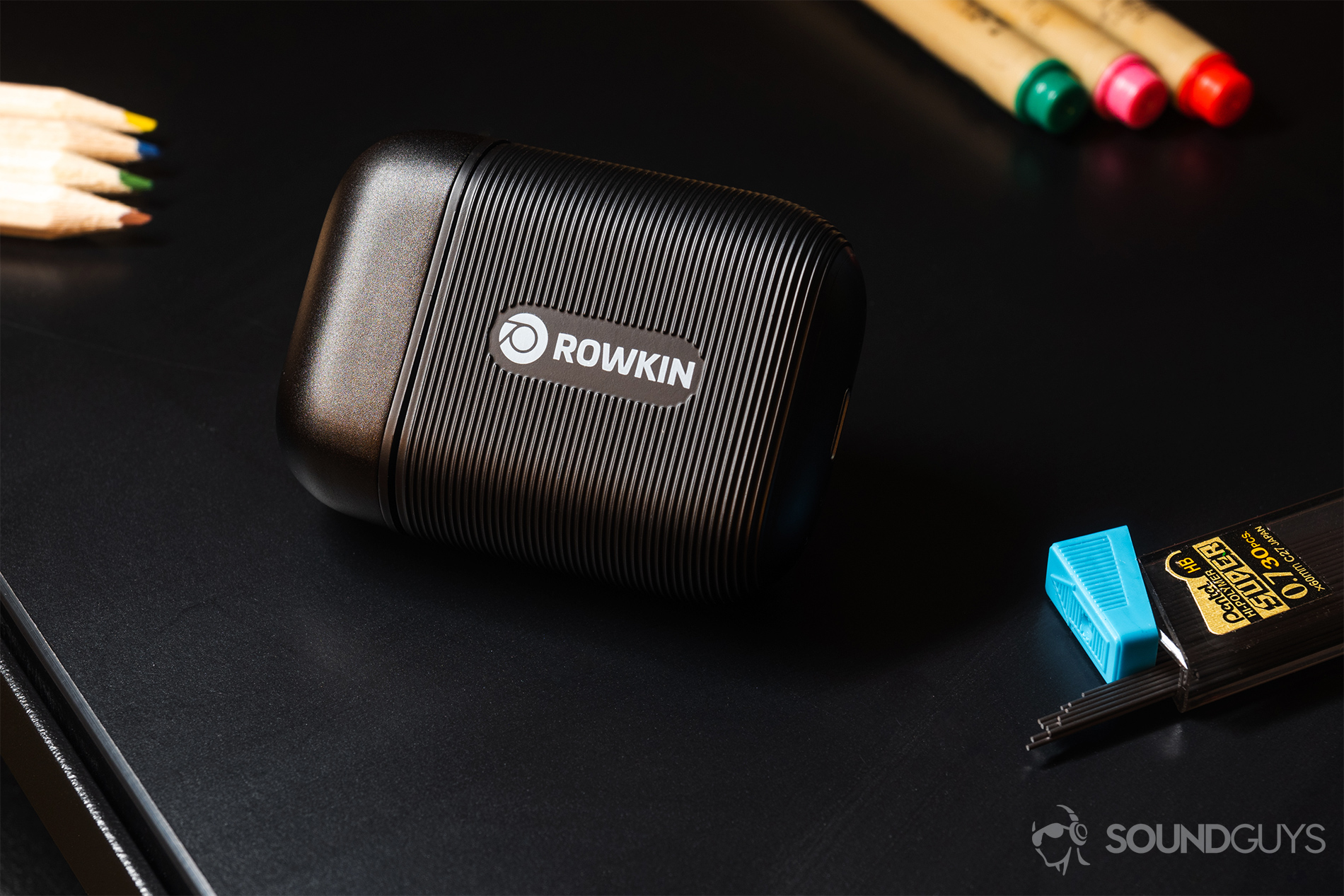
Angled nozzles extend from the housings at 45-degree angles, a design which promotes a more comfortable fit than straight nozzles. Behind the nozzle of each earbud sits a 6mm dynamic driver. While 6mm may seem small, the earbuds manage fairly accurate sound reproduction.
Touch controls
There are an array of directives to memorize, but once you have it down, they’re useful. In the meantime, here’s a cheat sheet from the Rowkin manual. If you receive a call while on the phone, you can tap and hold either earbud for three seconds to end the first and start the second. Additionally, tapping and holding either earbud for five seconds places the person on hold.
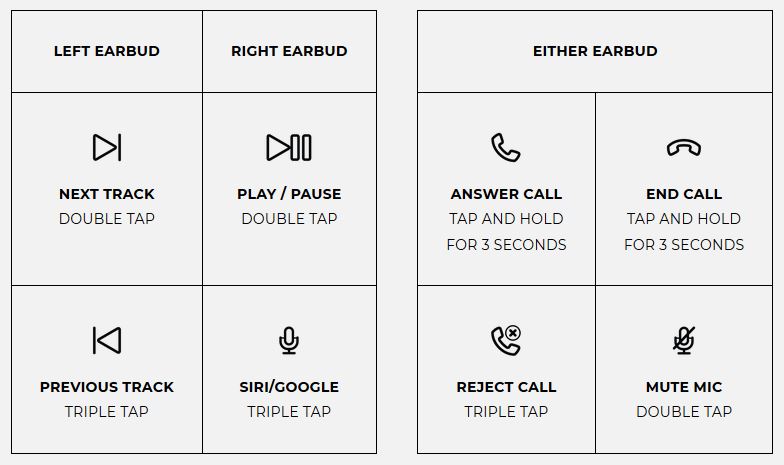
Are these good workout earbuds?
If you’re one for indoor exercise, they’re excellent. The fit is stable and the IPX5 certification means that you don’t have to worry about breaking the earbuds while breaking a sweat. However, if you run outside, you may want a safer pair of workout earbuds, because of the noise reduction effectiveness.
Battery life
The battery life of the Ascent Micro is solid. After subjecting the earbuds to a constant output of 75dB(SPL), the standalone playback time came out at 3.17 hours. Assuming that you’ll be listening at lower levels, you’ll likely be able to hit, or exceed, the 3.5-hour mark. And once the earbud batteries are drained, you can insert them into the case to automatically recharge.
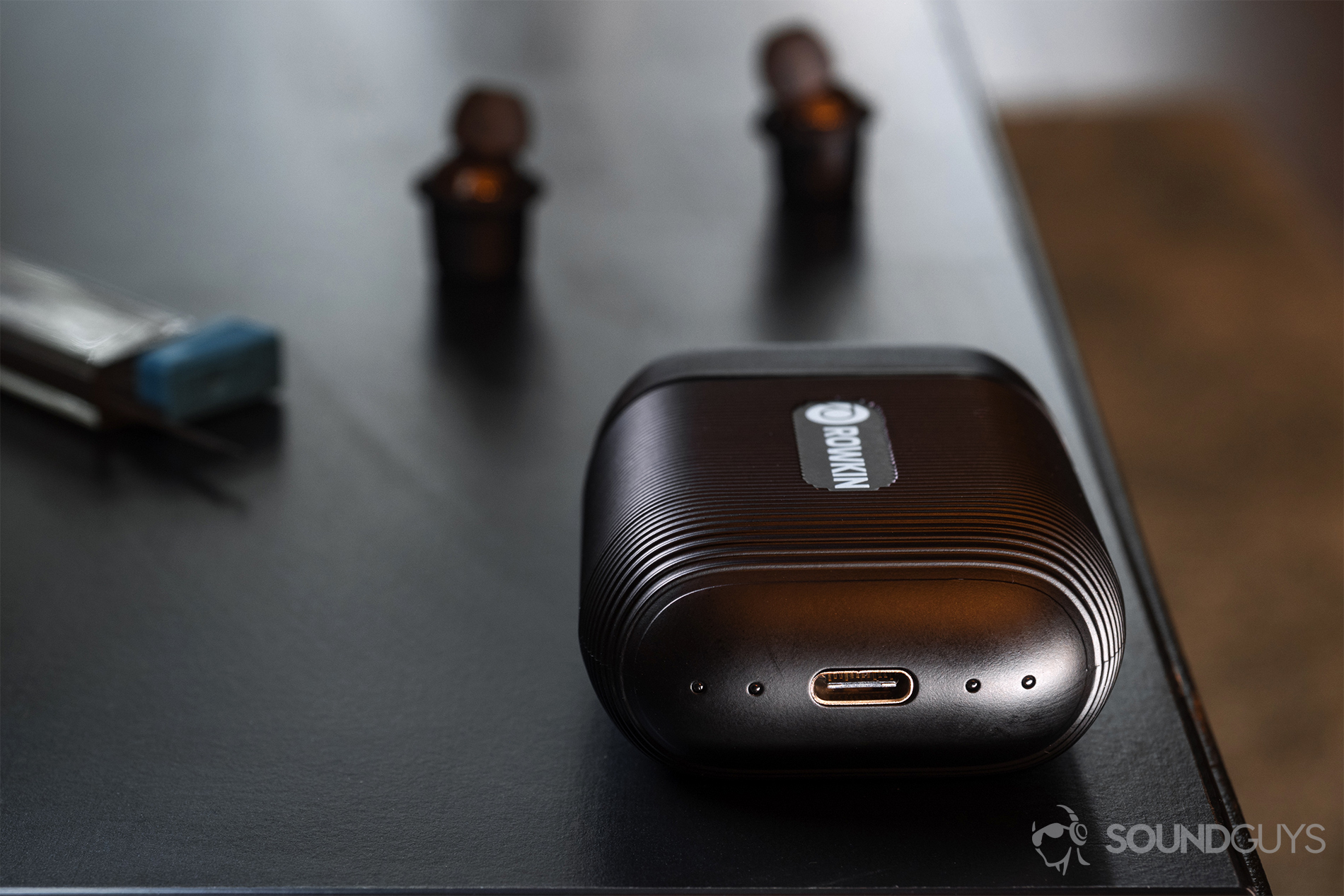
You’ll also have to keep an eye out for the case’s battery levels. This is indicated by the four LEDs that line the bottom, flanking the USB-C input. Which, yes, the case charges via USB-C but unlike its big brother, can’t charge your phone too. What’s more, to complete a full charging cycle for the earbuds and case, you’re going to need to set aside 70 and 120 minutes, respectively.
Connectivity
The Rowkin Ascent Micro is able to maintain a stable connection, but you want to make sure that you follow the directions for initial pairing: remove both earbuds from the case and wait for the right earbud’s LED to alternate between red and white flashes. At that point, you can pair to your device. If you try to pair each earbud individually, you’ll run into some issues.
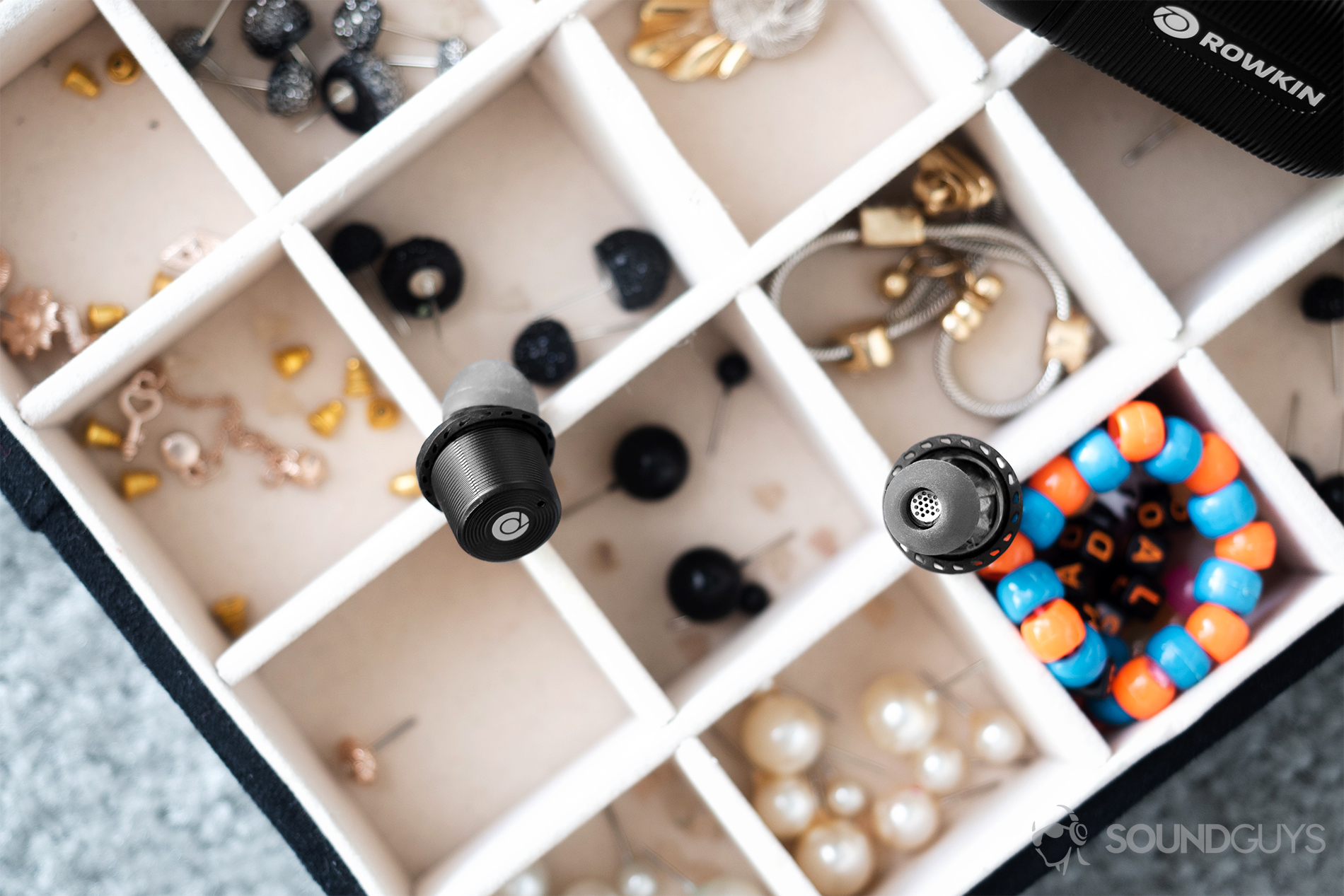
Operating via Bluetooth 5.0 means that the Rowkin Ascent Micro maintain a long-range connection. Unfortunately, both my PC and LG G6 are only Bluetooth 4.2 compatible, so I wasn’t able to directly test the 5.0 capabilities. However, I’m able to walk throughout my 900sqft. apartment without connectivity dropouts.
Although it’s a bummer that the earbuds aren’t AAC- or aptX-compatible, it’s not as bad as it seems. The biggest difference listeners may notice is the audio-visual lag when watching videos, not necessarily the streaming quality.
Mic quality
The integrated omnidirectional microphones perform well for casual calls, but voice clarity suffers when there’s too much environmental din. When sitting in a local coffee shop, which is an echo chamber of a room, the mics registered much of the reverb even with the echo cancellation technology. If you’re in desperate need of earbuds with great microphone quality, look into the Plantronics Voyager 6200 UC.
How do the Ascent Micro earbuds sound?
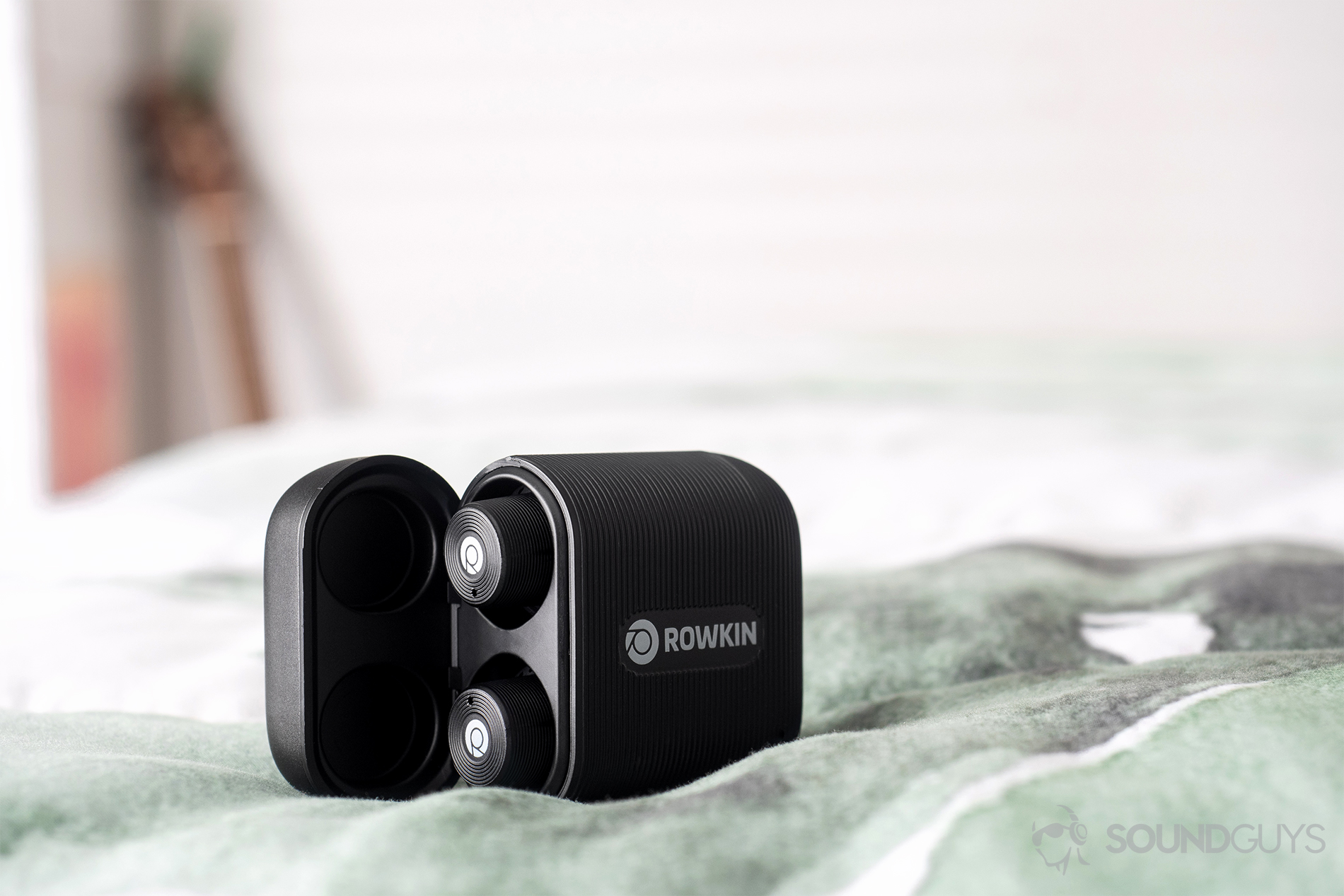
The Rowkin Ascent Micro earbuds sound virtually identical to its larger counterpart, meaning that the frequency response is surprisingly neutral until instruments venture into the treble frequency range. If you listen to music full of hi-hats and guitar slides, you may want other truly wireless earbuds as the reproduction of such instruments is harsh.
In San Cisco’s cover of Get Lucky, the intro of the sound is well reproduced: palm hits on the bongos are clearly audible while Jordi Davieson’s vocals remain clear, too, despite how faint his voice becomes at the end of the word “Phoenix” eight seconds into the song. The guitar chords rotate through the pattern Bm-D-F#m-E, and the strumming makes it harder to hear the bongos before the other instrumentalists join in.
During the chorus, Scarlett Stevens’ drumming plays well to underscore the song’s energy, but the cymbal hits are hard to bear when listening through the Ascent Micro. Decreasing the volume will help a bit, but it’s hard to ignore the harshness of the treble frequency reproduction. For low-end and vocals, however, the Rowkin Ascent Micro transcend expectations for such affordable true wireless earbuds.
Should you buy the Rowkin Ascent Micro?

Yes, the Ascent Micro affords a competitively priced pair of true wireless earbuds, which is still considered a rare feat. Naturally, such a reasonable price comes with sacrifices, namely the lack of high-quality codec support and just OK microphone setup. However, if you can overlook the drawbacks and embrace the compact nature of the water-resistant Rowkin Ascent Micro, you’ll end up a happy listener.
If you like everything about the Ascent Micro, but want something with better battery life, be sure to read up on the Rowkin Ascent Charege+. It’s virtually the same but features improved battery life, a 1,900mAh charging case, and a Qi Wireless Charger.
Up next: Best true wireless earbuds
Thank you for being part of our community. Read our Comment Policy before posting.